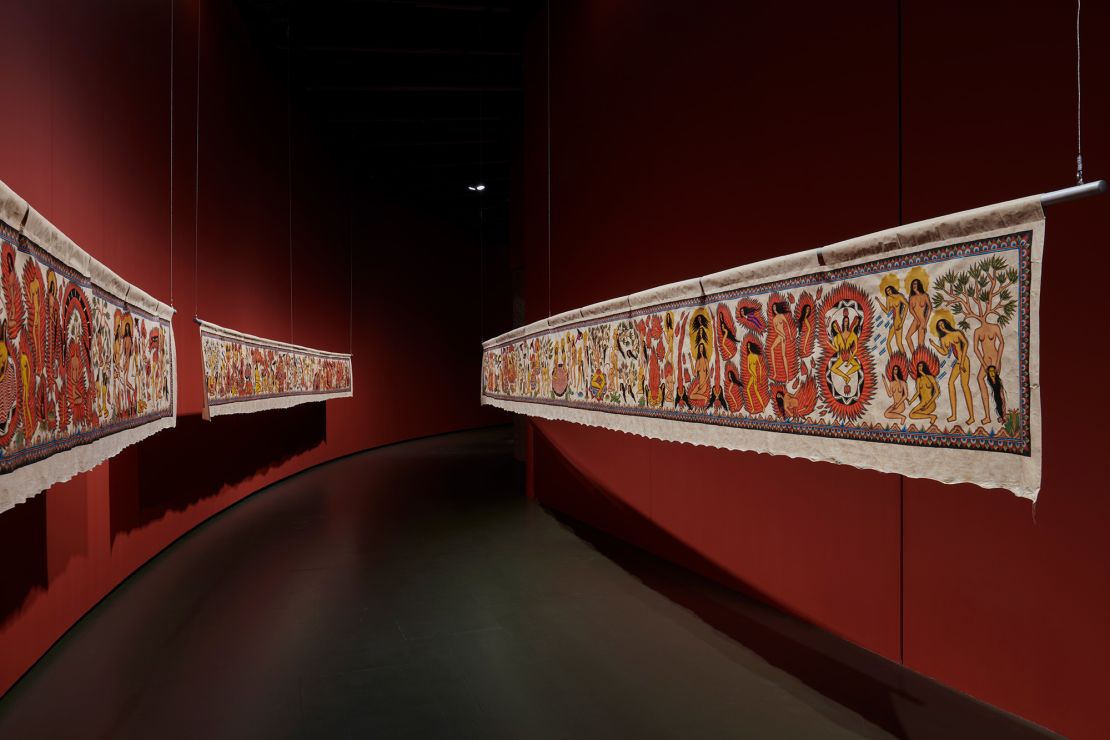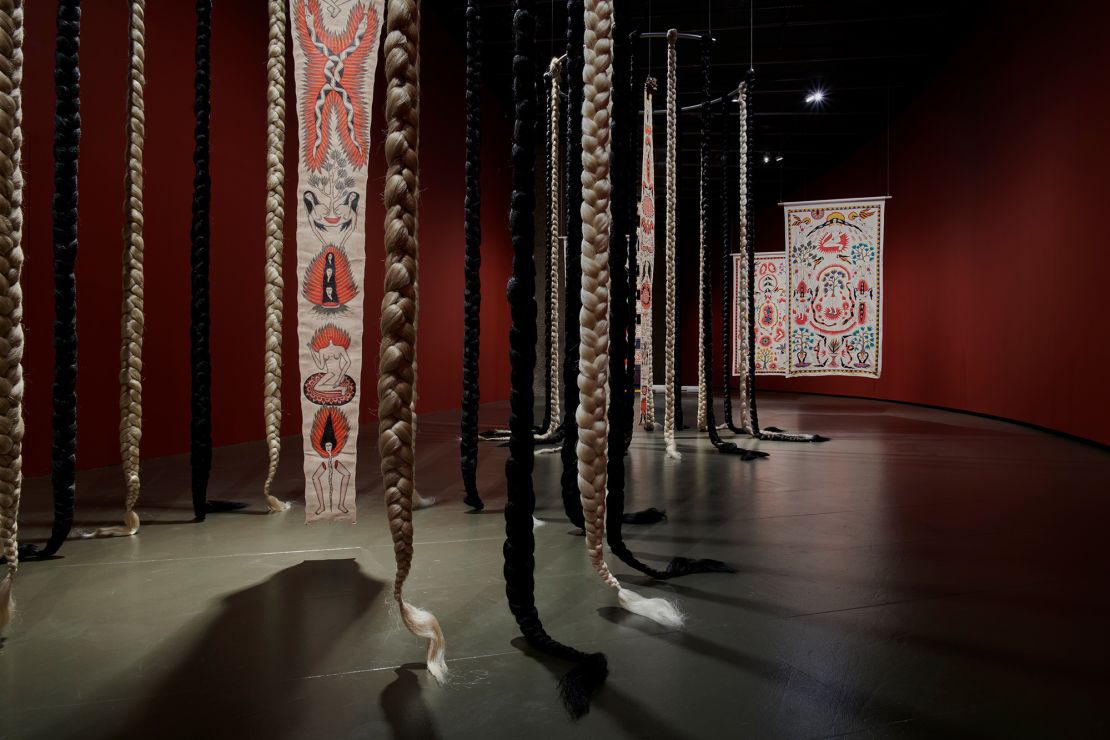On large-scale traditional tapestries and Kamasan scrolls, Sasmita depicts an array of stories that defy inherited myths and tradition, instead imagining a post-patriarchal world populated entirely by women. In these images, the serene severed heads of female warriors sometimes sprout with the new life of trees or take flight by transforming into birds, whilst others meditate, engulfed by red-hot flames.
Women’s rebellion, transformation, and rebirth are the themes that run through Sasmita’s work, which turns traditional Balinese iconography on its head. Her new exhibition, “Into Eternal Land,” is on display at London’s Barbican. Split into a prologue, three acts, and an epilogue, it makes clever use of the art center’s Curve gallery — a 90-meter-long (295-foot) space where her epic painted scrolls stretch into the distance, taking guests on a journey that manages to both embrace and defy tradition.

“I was interested in exploring the root of patriarchal culture in Bali,” Sasmita told CNN of her Indonesian island home, during the exhibition opening. “Much of our inherited literature, in our old manuscripts and the epics, portray women as only having a sexual function — especially in the Kama Sutra story and Panji Tales.”
By rewriting these myths and replacing every man with a woman, Sasmita is “rethinking the stories that are being told,” the exhibition’s curator, Lotte Johnson, told CNN. “They are not stories of domination. They are women having these incredibly visceral experiences in communion with each other.”
Ancient art, modern storytelling
In the fantastical images, modern ideas are brought to life through the cultural symbols that characterized Sasmita’s upbringing in Bali. She explores the topics of ritual, heaven, and hell, creating a new cast of characters for her version of canonical legends and myths — now filled with representations of women’s experiences.
Much of Sasmita’s practice can be characterized as a modern reimaging of traditional Balinese Kamasan paintings. Like shadow puppetry, Kamasan painting used ancient epics and mythological stories as inspiration. Heralding from a village of the same name in east Bali, this painting style has been practiced since the 15th century. Traditionally, men chose which stories were illustrated and how they were painted, with women being consulted only on the choice and use of color in the final stages.

Dr Siobhan Campbell, a scholar of Indonesian art and textiles, told CNN via email that like many cooperative art practices throughout Indonesia, “there has traditionally been a division of labor based on gender.” Through her work in the Kamasan community, Campbell found that women’s roles in the painting process have historically been downplayed. “The most recognized artists in the past have been male and people have assumed that only men paint Kamasan scrolls,” Campbell explained.
Speaking about her own use of traditional Balinese artistic practices, Sasmita said: “I like to make a dialogue between antique objects and the current material world. It becomes a certain language to bridge people from this modern context to the historical context.”
Sasmita trained under the Hindu priestess and artist Mangku Muriati, one of the only women famous for inscribing her own stories onto Kamasan scrolls. From here, Sasmita committed to creating her iconography of womanhood, one glaringly absent from traditional work. “Bringing women into the main narrative of this artwork, making them the hero of my own story, this is my statement as a feminist,” she said.
Rejecting Dutch colonial narratives
Her work also serves to reclaim Balinese art history. Sasmita sees the violent Dutch occupation of Bali in 1908 as altering the trajectory of Balinese art — transforming traditional practices into a commodity that could be sold to tourists. “It changed the mindset from art as devotion, art made by the community for devotion, into something individualistic,” she said.

“When my generation was learning about art, we only learnt how to glorify Western artists,” Sasmita added. “As a result, I didn’t have a chance to find a book and learn about traditional Balinese artists, or about who the Balinese masters were.”
Although this is her first UK solo exhibition, Sasmita’s eyes are firmly set on the continuation of artistic culture back home, where she works closely with a traditional artistic community. “I want our government to pay attention to the crafter and traditional artists. The way we inherit and maintain the knowledge is very strong,” she said. “It is a national asset, and one that is very, very beautiful.”














